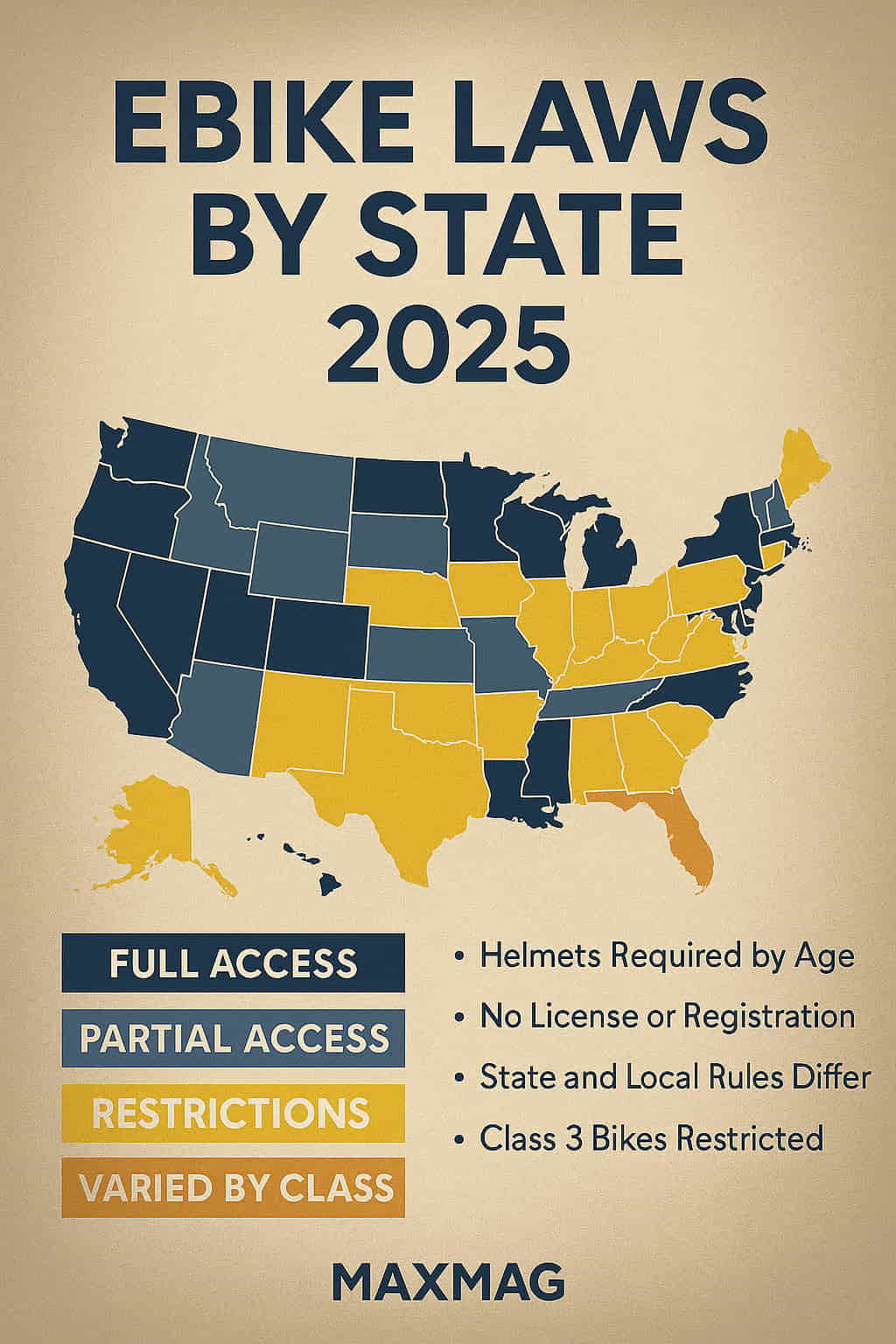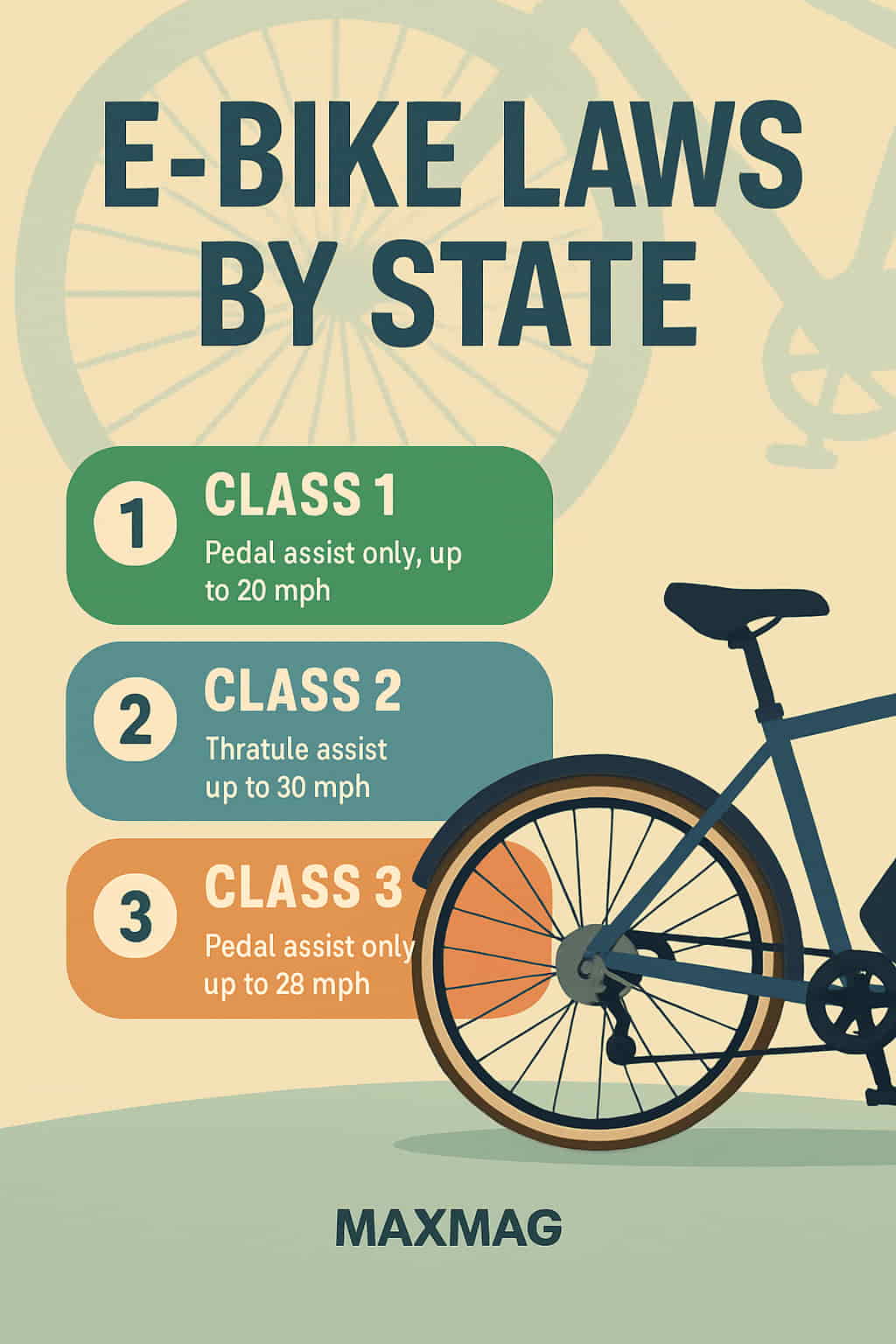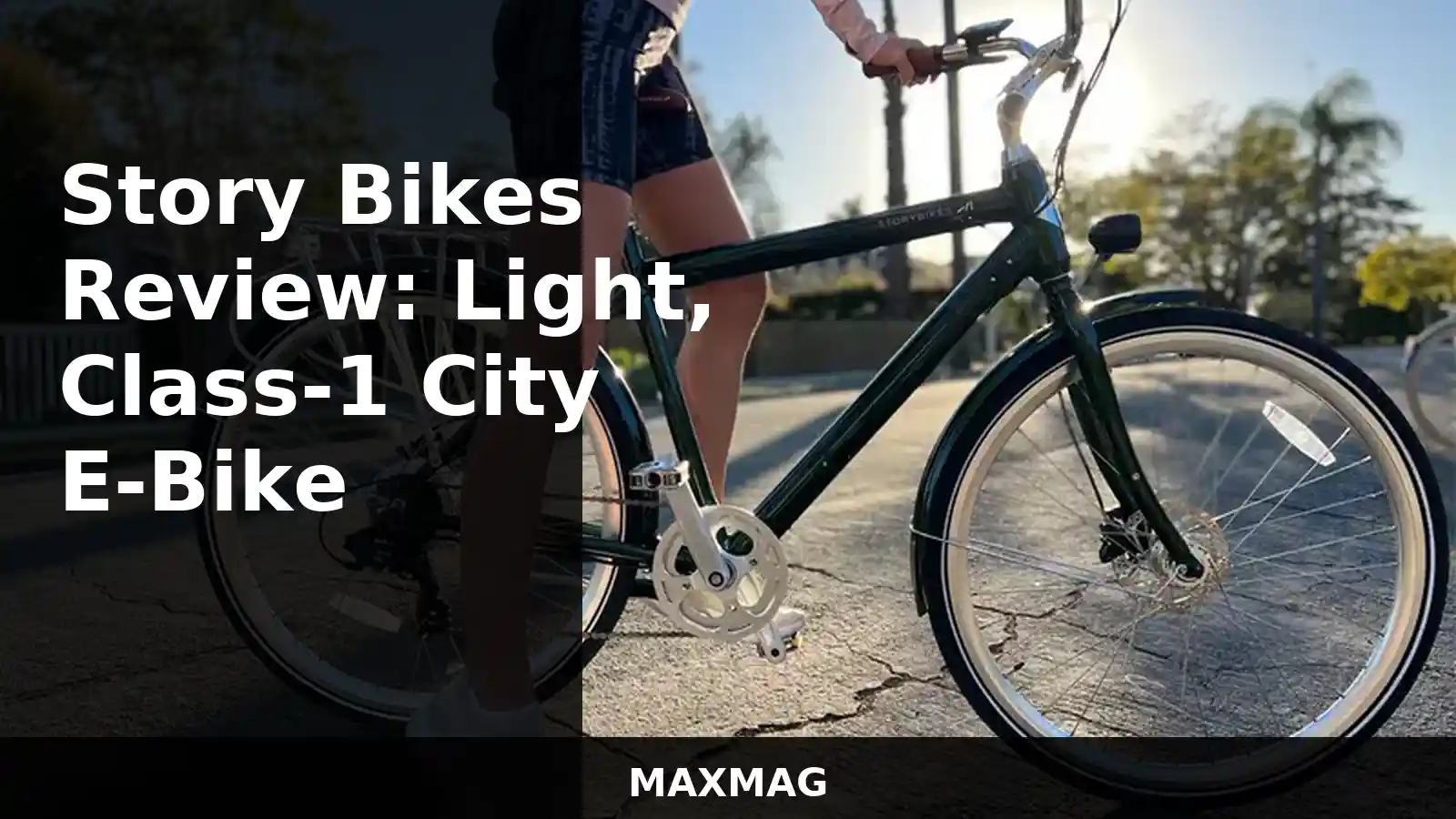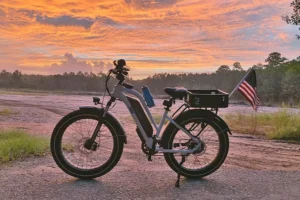Electric bikes have gone mainstream, but their legal status isn’t always clear. What’s allowed in California may not fly in Texas. Whether you’re commuting, trail riding, or just exploring your neighborhood, understanding ebike laws by state in 2025 is more important than ever.
This updated guide walks you through what’s legal (and what’s not) across all 50 U.S. states, so you can ride confidently and stay within the law.
Why Ebike Laws Are So Confusing
Unlike traditional bicycles, e-bikes come with motors, and that’s where things get tricky. While federal guidelines define what qualifies as an e-bike, each state sets its own rules about where you can ride, what safety equipment you need, and whether registration is required.
Plus, with the growing popularity of high-speed Class 3 e-bikes and throttle-powered models, state-level legislation has rapidly evolved over the past few years.
The Federal Definition of an Ebike
Before diving into state-by-state differences, it’s worth knowing what federal law says. According to the U.S. Consumer Product Safety Commission:
An electric bike is a bicycle with a motor of 750 watts or less that does not exceed 20 mph on motor power alone and must have operable pedals.
This definition allows manufacturers to sell e-bikes without treating them like motor vehicles—but states are free to regulate usage differently.
Ebike Laws by State 2025 – Class System Overview
Most states use a 3-class system to define e-bikes:
-
Class 1: Pedal-assist only (no throttle), max speed 20 mph
-
Class 2: Throttle-assisted (can move without pedaling), max speed 20 mph
-
Class 3: Pedal-assist only, up to 28 mph; often with restrictions (e.g., age limits, no bike paths)
Knowing your bike’s class is essential. Let’s break down how states regulate each class in 2025.
Ebike Laws in Major U.S. States (2025)
Here’s a look at key regulations in major states. For a full list, consult your local Department of Transportation or DMV.
🚲 California
-
Classes Recognized: 1, 2, 3
-
Helmet Required: Only for Class 3 or riders under 18
-
Bike Paths: Class 1 and 2 OK; Class 3 banned unless local ordinance allows
-
Age Restrictions: Class 3 requires rider to be 16+
California has one of the most detailed e-bike codes and supports rebates for low-income residents through programs like Clean Cars 4 All.
🚲 New York
-
Classes Recognized: 1, 2, 3
-
Helmet Required: Yes, for all riders on Class 3
-
Speed Limits: Strict enforcement of 20 mph for Classes 1 & 2
-
Where to Ride: Local rules vary in NYC and Long Island; check signs
New York legalized e-bikes in 2020 but still limits throttle use and restricts certain areas (like parks) from all classes.
🚲 Texas
-
Classes Recognized: 1, 2, 3
-
Helmet Required: Only for riders under 18
-
Bike Paths: All classes allowed unless restricted
-
Licensing: Not required
Texas is generally e-bike friendly, especially in major metro areas. Trail rules vary by county, so double-check when planning off-road rides.
🚲 Florida
-
Classes Recognized: 1, 2, 3
-
Helmet Required: Riders under 16
-
Licensing/Registration: Not required
-
Access: E-bikes allowed wherever traditional bikes are permitted
Florida passed legislation in 2020 aligning with the 3-class model. Cities like Miami and Orlando promote e-bikes as part of their green transit programs.
🚲 Colorado
-
Classes Recognized: 1, 2, 3
-
Helmet Required: Only for riders under 18 on Class 3
-
Trails: Class 1 and 2 allowed on multi-use trails; Class 3 often restricted
-
Rebates: Up to $500 available for e-bike purchases via Colorado Energy Office
Colorado is one of the most proactive states in integrating e-bikes into its sustainable transportation efforts.
States With Unique or Stricter Laws
❗ Hawaii
-
Requires registration of e-bikes
-
Riders must be at least 15 years old
❗ Alabama
-
Class 3 e-bikes considered motor-driven cycles unless reclassified
❗ West Virginia
-
Requires a certificate of title for Class 3 bikes
-
Helmet mandatory for all riders
❗ Alaska
-
No formal classification system
-
E-bikes may be subject to motor vehicle laws depending on speed
Ebike Laws by State 2025 – Common Trends
As e-bike usage increases, certain patterns are emerging:
-
Helmet laws are generally age-based
-
Class 3 bikes face the most restrictions
-
No license or registration is needed in most states
-
Bike path access depends heavily on local ordinances
-
States with active rebate programs are seeing faster e-bike adoption
If you’re riding across state lines or moving, it’s smart to double-check local laws before hitting the road.
Where to Ride Your E-Bike (and Where Not To)
E-bikes are often treated like regular bikes, but that doesn’t mean you’re welcome everywhere. Here’s a quick look:
| Area | Class 1 | Class 2 | Class 3 |
|---|---|---|---|
| City bike lanes | ✅ | ✅ | ✅* |
| Multi-use trails | ✅ | ✅ | 🚫 |
| Sidewalks (urban) | 🚫 | 🚫 | 🚫 |
| Mountain bike trails | ❓ | ❓ | 🚫 |
| State/national parks | ❓ | ❓ | 🚫 |
(*Class 3 may be restricted by local laws)
Always check with city planning departments or trail managers. Many parks now post digital maps showing e-bike access points.
Safety Equipment Recommendations
Even when not required by law, consider the following for safe riding:
-
Helmet (with MIPS protection if possible)
-
Front/rear lights (USB rechargeable preferred)
-
Bell or horn
-
Reflective gear for night visibility
-
Rearview mirror (especially helpful at higher speeds)
The National Highway Traffic Safety Administration (NHTSA) recommends all e-bike riders wear helmets and ride predictably.
Insurance, Registration, and Licensing—Do You Need It?
In most states:
-
No license required
-
No registration needed
-
No insurance mandated
However, a few states like Hawaii and Alabama are exceptions—especially for faster Class 3 bikes.
That said, many riders are now purchasing e-bike insurance policies for theft and crash protection. Check out providers like Velosurance or Spoke Insurance.
Tips for Traveling with an E-Bike Across States
-
Bring a copy of your local e-bike law in case you’re questioned
-
Stick to Class 1 or 2 for maximum access
-
Carry a battery fire bag if flying or taking long transit
-
If in doubt, ride slow, follow bike signage, and stay respectful
What About Federal Lands?
National parks, BLM trails, and federal lands now permit Class 1 and 2 e-bikes in many places. However:
-
Class 3 often prohibited
-
Local managers can override national rules
-
Always check on NPS.gov or Recreation.gov for specific trail regulations
FAQ: Ebike Laws by State 2025
Q: Do I need a license to ride an e-bike in the U.S.?
A: No, not in most states. A few (like Alabama) may require it for Class 3.
Q: Are helmets mandatory?
A: Often yes, for riders under 16 or 18, and always for Class 3 riders in most states.
Q: Can I ride an e-bike on sidewalks?
A: Usually no—especially for Class 2 or 3 bikes. Local laws vary.
Q: Do I need to register my e-bike?
A: Only a few states, like Hawaii, require registration. Most do not.
Q: What’s the difference between Class 2 and Class 3?
A: Class 2 bikes have a throttle and cap at 20 mph. Class 3 bikes are pedal-assist only but go up to 28 mph and face more restrictions.








